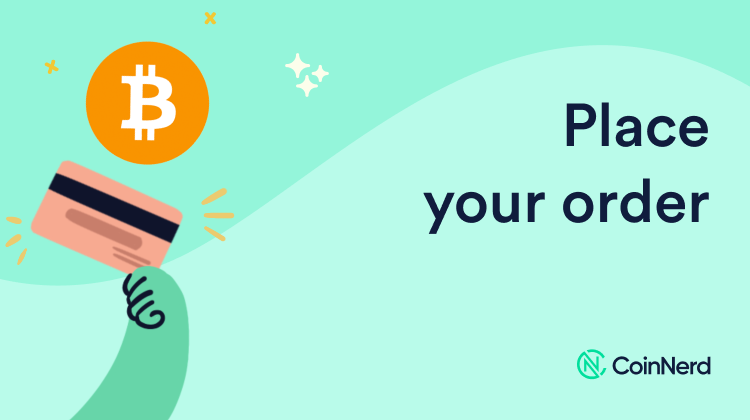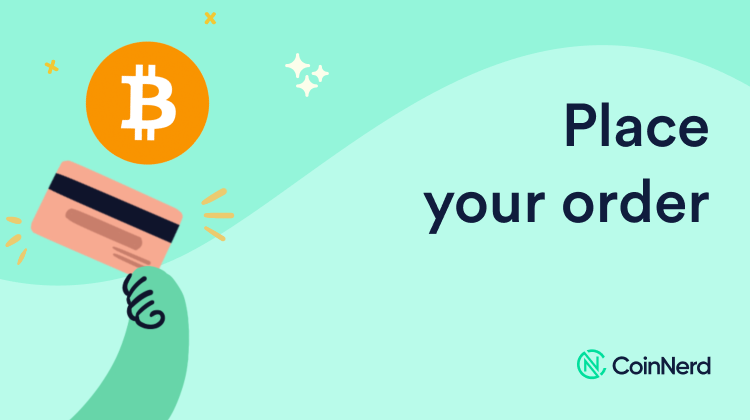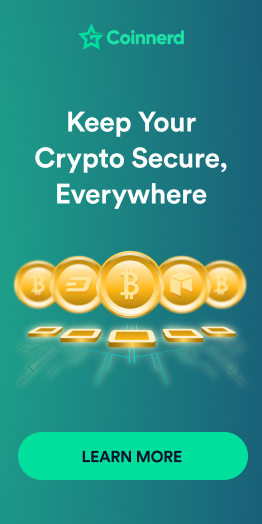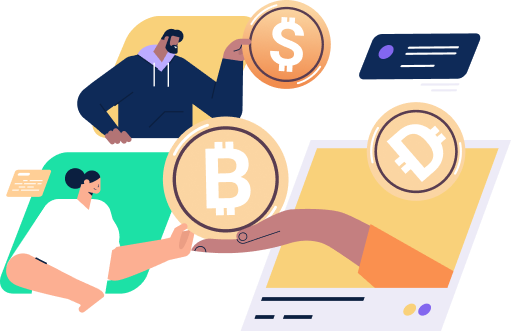A Step By Step Guide on Buying Bitcoin
Buying Bitcoin might seem complicated at first glance. And it is! Since you’ll have to do a lot of setup and preparation first. Luckily we’re here to make things simple and we can summarize the process into three simple steps:
- Choosing an exchange platform to use
- Linking said platform to a payment service then ordering your Bitcoin
- Storing the Bitcoin you bought into a Bitcoin wallet.
So let’s go through all of these steps together starting with the first one.
Steps In Buying Bitcoin
Step 1: Choose a Crypto Exchange Platform
To purchase bitcoins, you must first select a crypto trading service or venue to buy from. Popular cryptocurrency trading services and venues include cryptocurrency exchanges, cryptocurrency payment services, and brokers.
It’s the most convenient of these options because it has a wider range of features and more currencies to trade.
You will be able to buy, sell, and store cryptocurrency if you join a cryptocurrency exchange. An exchange that allows users to withdraw crypto into their online wallets for safekeeping is generally the best practice. This feature may not be important to those who want to trade Bitcoin or other cryptocurrencies.
Cryptocurrency exchanges come in all shapes and sizes. Some Bitcoin exchanges allow users to remain anonymous and do not require users to enter personal information because of the Bitcoin ethos of decentralization and individual sovereignty. As a result, these exchanges do not have a single point of control and operate independently.
The world’s unbanked population can benefit from these systems, even though they can be used for evil purposes. Anonymous exchanges can be useful for certain groups of people, such as refugees or those who live in countries with little or no government credit or banking infrastructure.
For the time being, however, the majority of popular exchanges are not decentralized and require users to submit identification documentation. Exchanges like Binance.US, FTX, and Coinbase in the United States offer a wide range of cryptocurrencies for purchase and trading. Since the introduction of these exchanges, their offerings have grown significantly.

It’s possible to buy bitcoin on these three exchanges, which also offer a growing number of altcoins, including Ethereum and Ripple. These three are among the simplest ways to get started with cryptocurrency. Binance is a more advanced trading platform, with more advanced features and a wider selection of altcoins to choose from.
There are only a limited number of altcoins available to U.S. investors on the fast-growing crypto exchange FTX, which has a multibillion-dollar valuation. On the other hand, traders outside the United States have access to a wider selection of tokens.
Use safe Internet practices when registering for a cryptocurrency exchange account. Two-factor authentication and a long, unique password with a mix of lowercase and capital letters, special characters, and numbers are two of the most important parts of this strategy. You don’t want hackers to steal your hard-bought Bitcoin, would you?
Step 2: Find a Payment Option and Order Bitcoin
Finding a cryptocurrency exchange is wanting, finding a platform to pay for it is another thing. Once you’ve decided on an exchange, you’ll need to gather all of your documentation. Images of your driver’s license or Social Security card, along with information about your employer and the source of your funds, may be required for some transactions.
You may need different information depending on where you live and the laws in your area. As with most brokerage accounts, setting up an account is a fairly straightforward process.
You will be prompted to link a payment method after your identity has been verified by the exchange. Most exchanges allow you to use a debit or credit card or your bank account to make a purchase.
Although it is possible to buy cryptocurrency with a credit card, it is not recommended because the volatile nature of the cryptocurrency market could increase the overall cost of acquiring a coin.
Although it is legal to use Bitcoin in the United States, some banks may question or even prevent deposits to crypto-related websites or exchanges from being processed. Deposits can be made using a bank account, debit card, or credit card, and the fees for each method vary.
To make an informed decision on whether to use an exchange or a specific payment method, it’s critical to look into the costs associated with each.
Transaction fees are also charged by exchanges. Depending on the volume of trades, these fees may be a flat rate or a percentage of the total. In addition to transaction fees, credit cards charge a processing fee.

Once you’ve selected an exchange platform and a payment method, you’ll be able to purchase bitcoin and other cryptocurrencies. Cryptocurrency exchanges have gradually become more mainstream over the last few years. As a result, their liquidity and feature set has grown significantly.
There has been a shift in the perception of cryptocurrencies, which has led to operational changes at cryptocurrency exchanges. All of the major players in the financial services sector are taking an interest in an industry that was once viewed as a scam or as having questionable practices.
At this point, cryptocurrency exchanges are almost as feature-rich as traditional stock exchanges. There are a variety of order types and ways to invest in cryptocurrencies today. Almost all crypto exchanges provide market and limit orders, as well as stop-loss orders in some cases.
Step 3: Find a Crypto Wallet
Wallets for Bitcoin and other cryptocurrencies provide a haven for digital assets. When you store your cryptocurrency in a private wallet, only you have access to the private key that unlocks your funds.
Most exchanges provide wallets for their customers, but their primary focus is not on security. Using an exchange wallet for long-term cryptocurrency holdings is generally discouraged.
Wallets vary in terms of the number of features they offer. Some only store Bitcoin, while others allow the storage of a wide variety of alternative cryptocurrencies. Token swapping is also possible in some wallets.
Cryptographic wallets can be divided into two categories: Cold and Hot Wallets.
Cold Wallets
When it comes to cold wallets, the simplest way to describe them would be that they aren’t connected to the Internet, which means that they are less vulnerable to hackers. Offline wallets and hardware wallets can also be used to describe these wallets.
A user’s private key is stored on a device that isn’t connected to the internet in these wallets, which may also include software that allows the user to view their portfolio without exposing their private key to danger.
In terms of offline cryptocurrency storage, a paper wallet may be the most secure option. A paper wallet is a wallet that can be generated online. It then generates a set of public and private keys, which can be printed out. If you don’t have the private key, you won’t be able to use the cryptocurrency stored in these addresses.
A lot of people laminate these paper wallets and store them in their bank’s safe deposit box or even in a safe in their own homes. For long-term investments, these wallets are the best option because you can’t easily sell or trade bitcoin stored in this way.
It is common for hardware wallets to be USB drives that store a user’s private keys in an offline location. In contrast to hot wallets, these are immune to viruses that could infect a user’s machine. Using a hardware wallet ensures that your private keys are never exposed to your network or any software that could be exploited.
In addition to being open-source, these devices allow the community to audit their code to determine whether or not they are safe to use. It is the safest method of keeping your bitcoin or other cryptocurrencies in your cold wallets. However, they require a higher level of expertise to be set up.
Hot Wallets
The term “hot wallet” refers to online wallets. This type of wallet is referred to as a “hot wallet” because it is accessible via the internet. These wallets generate the private keys to your coins on these Internet-connected devices, which creates a vulnerability.
Despite the ease with which you can access and transact with your assets through a hot wallet, storing your private key on an Internet-connected device makes it more vulnerable to a hack.
For those who use hot wallets and don’t have adequate security measures in place, they could lose their money to theft. Several things can lead to this, and it doesn’t happen infrequently. Using a public forum like Reddit to boast about how much bitcoin you own while storing it in a hot wallet is not a good idea.
If precautions are taken, these wallets can be safe. Using two-factor authentication, creating strong passwords, and staying safe online should be considered a given.
If you have a small amount of cryptocurrency or are actively trading on an exchange, these wallets are best for you. A hot wallet can be compared to a bank account.
You should keep only a small amount of money in a checking account, and the rest of your money in a savings account or other investment accounts, according to the conventional wisdom of financial planning. The same can be said for wallets that are on the fritz. There are a variety of types of hot wallets, including mobile, desktop, web, and exchange account wallets.
Things To Know When Buying BItcoin
Investors in Bitcoin are concerned about issues like privacy and security. Anyone with access to a public Bitcoin address’s private key can execute transactions. Criminals may try to steal private keys if they learn of large holdings, so they should be kept under wraps. Be aware that the balance of a public address can be seen by anyone.
Public information, on the other hand, enables individuals to set up multiple online identities for themselves. As a result, they can distribute their Bitcoins among a large number of addresses. Significant investments should be kept at public addresses that are not linked to those used in transactions, as this is a good strategy to use when conducting business.
A blockchain transaction history can be viewed by anyone, including yourself. Even though transactions are recorded on the blockchain, it is impossible to identify individual users. There is no way to hide transactions on the Bitcoin blockchain because only a user’s public key is displayed next to them.
Since Bitcoin transactions can be viewed by anyone, they are more transparent and traceable than private cash transactions. Despite this, Bitcoin transactions have a built-in level of anonymity. On the blockchain of the cryptocurrency, it is extremely difficult to identify the parties involved in the transaction—the sender and recipient of the bitcoin.
Bitcoin blockchain transactions can be tracked to users’ other online accounts, including digital wallets, claim international researchers and the FBI. A person who wants to open an account on Coinbase will need to provide proof of identity. After this, whenever that person buys bitcoin, it is linked to their identity.
The account holder’s identity is linked to the Coinbase purchase, even if they transfer the cryptocurrency to another wallet. Bitcoin is legal in the United States and most developed countries, so this shouldn’t be a problem for most investors.
Other Ways of Buying Bitcoin
Aside from cryptocurrency exchanges, there are alternative methods for buying Bitcoin. Sometimes they are even more convenient and sometimes they could be costly depending on your preference. If you don’t like using crypto exchange platforms or simply want another way to buy your BTC, we recommend that you check these other methods out.
Bitcoin ATMs
Bitcoin ATMs function in a similar way to in-person bitcoin exchanges. By inserting cash into a machine, users can buy bitcoins that are later sent directly to their online wallets for safekeeping.
However, it might not be worth it since using an ATM costs money. There are two fees associated with ATM bitcoin purchases: a purchase fee and a conversion fee for converting fiat currency to bitcoin.
Compared to other options, both fees are quite high. Concerning ATM purchase fees and sales fees, the global averages are 8.4 percent for purchases and 5.4 percent respectively.
To put it simply, you can buy Bitcoin using Bitcoin ATMs but it won’t be cheap and they take a decent amount of your money in sales and purchase fees. It could be a good way to buy small amounts of Bitcoin but we certainly recommend you avoid using this method if you are planning to buy Bitcoin in bulk.

Using Your Credit/Debit Card
Bitcoin and other cryptocurrencies may be out of the question if you’re used to using a credit card for all of your purchases. The exchange where you’re trying to buy the cryptocurrency or your credit card issuer could limit you if you try.
Credit cards are not accepted by some of the largest cryptocurrency exchanges, such as Coinbase. Credit cards are accepted by Coinmama and CEX.io but only Visa and Mastercard, according to their websites. Even if your credit card company does allow it, that doesn’t mean you can use it.
If you use a credit card in the United States, you may not be able to use it to buy cryptocurrency.
Even if you can exchange dollars for bitcoins using a credit card from, say, a smaller bank, you might not want to.
Purchasing cryptocurrency with a credit card is a simple process:
Step 1:
Look for an exchange that accepts credit card payments. The first thing you should do is sign up for a cryptocurrency exchange that accepts credit cards. Personal information and verification of identity may be required depending on which option you select.
Step 2:
Make sure your credit card company accepts cryptocurrency purchases. Check with your credit card company to see if they allow crypto purchases before you go any further. If you’re not sure, you can also inquire about whether or not the transactions will be considered purchases or cash advances.
Step 3:
Choose a method of payment. Your credit card information must then be entered and saved as a preferred payment option. Make your purchase in the currency and amount of your choice from among the available cryptocurrencies. Proceed with the purchase after you’ve double-checked everything. As soon as you have the money, make it a top priority to pay off your debt or the interests could stack.
Using Paypal
You’ll need a PayPal account to make a crypto purchase through PayPal. To buy crypto using PayPal, all you need to do is click the “crypto” button and select the coins you’d like to purchase.
Bitcoin, Ethereum, Litecoin, and Bitcoin Cash are all available for purchase through the PayPal app’s crypto-currency section. However, if you’re a new investor, it’s recommended that you stick with Bitcoin and Ethereum.
When making a purchase, you’ll need either a linked debit card or a linked bank account. When it comes to weekly spending, there are no hard and fast rules. There is a fee for using PayPal to buy and sell cryptocurrency, which varies depending on the amount of cryptocurrency you purchase.
Purchase of cryptocurrency through PayPal is distinct from a purchase made on an exchange such as Gemini. There are two ways to fully own cryptocurrency: You can either store it in your wallet or give it away, which is a big difference when it comes to full ownership.
PayPal is an exception to this rule. To make a withdrawal from your PayPal account, you’ll have to sell your cryptocurrency on PayPal, which you’ll have to report on your tax return.
There are many advantages of using a crypto exchange if you are looking for complete control over your coins. Although they can be more difficult to use at first, you’ll have more control over your coins and may have to pay fewer fees as a result. You can exchange one cryptocurrency for another using these marketplaces.
Brokerages
Due to the lack of clarity surrounding the regulatory status of cryptocurrencies, only a small number of mainstream brokerages provide purchasing and trading options for bitcoin. This app, Robinhood Markets, Inc. (HOOD), is a popular choice for retail investors who want to trade digital currency.
In exchange for the payment of order flow, it charges no commission on cryptocurrency trades or purchases and makes money through passing its trading volume onto other platforms or brokerages, like Coinbase.
Beginners may find the lack of a commission fee appealing, but there are a couple of caveats. First and foremost, Robinhood lacks the breadth of features and coins available on prominent crypto exchanges like Coinbase.
Seven cryptocurrencies were available for trading on Robinhood’s platform: Bitcoin, Bitcoin Cash, Ethereum, Bitcoin SV, Dogecoin, and Ethereum Classic.
However, on other platforms like Coinbase, you can trade over a hundred cryptocurrencies. In addition, the exchange provides a variety of order types to reduce trading-related risks and losses.
Peer-to-peer Exchange
Peer-to-peer (P2P) exchange services, unlike decentralized exchanges, which match buyers and sellers anonymously and handle all aspects of the transaction, are becoming more popular. Users can post requests to buy or sell bitcoin, along with details on payment methods and prices, once they’ve registered for an account.
After that, users can look through a list of available buy and sell offers and select the parties with whom they want to conduct business.
P2P exchanges may not offer the same level of anonymity as decentralized exchanges, however, they allow users to choose the best price. Before making a transaction, users can rate potential trading partners on many of these exchanges.
Conclusion
Buying Bitcoin can be very intimidating especially with all the different methods available to you. We still recommend doing it at an exchange platform since it’s the most cost-effective method out there and it’s a good way to learn more about cryptocurrencies. We hope our article was helpful and it helped you buy your first Bitcoin.
* We hope this information will help you in your investment process, but this is not investment advice. Every investment carries risk, especially in this industry, so DYOR before making a decision.






